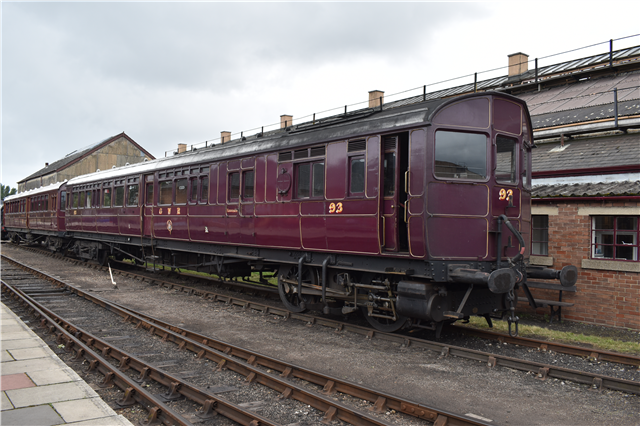The steam rail motors (SRM) were self-propelled carriages operated by the Great Western Railway in England and Wales from 1903 to 1935. They incorporated a steam locomotive within the body of the carriage.
In the first years of the twentieth century, railway managements turned their attention to the need to provide better local passenger services and to reduce costs, in the face of increasing demand for convenient travel and the competitive threat posed by urban tramways. The London and South Western Railway had successfully operated a railmotor, consisting of a self-contained passenger vehicle with its own steam power unit and the Great Western Railway arranged to borrow one unit for trials.
The trial proved successful, and a steam rail motor was designed by the Chief Mechanical Engineer George Jackson Churchward. Two units were manufactured, and they entered service on the 12 October 1903. A further 44 were built during 1904 and 1905, and by the time production finished in 1908 the fleet numbered 99 carriage units. There were 112 power units which could be changed between carriages to suit maintenance needs.
The relatively limited accommodation led to problems at busy periods, and driving trailers were constructed with a mechanical facility to control the main unit, so that the train could be driven from the driving trailer, maintaining the avoidance of running round at terminals.
In February 1908, a steam rail motor was turned out from Swindon railway works and given the number 93. It was one of sixteen built to Diagram R, the last batch of steam rail motors. These were 70 feet long and 9 feet wide. After running 479,006 miles it was withdrawn in November 1934, the power unit was removed, and the carriage portion converted into an auto trailer. Now renumbered 212, it operated in this form until May 1956. It was then put into use as a "Work Study Coach" and later as a static office in Birmingham.
In 1970, it was sold to the Great Western Society and moved to their base at Didcot Railway Centre. It was not until 1998 that they were able to make a start on returning it to original condition as a steam rail motor. The frame of the new power bogie was erected in November 2000 at the Tyseley Locomotive Works and was then mounted on wheels and fitted with a boiler. In January 2009 the carriage portion was restored, and the two portions brought together. Work was completed in March 2011 and No. 93 returned to public service at Didcot in May later that year. In 2013 the restoration of auto trailer No. 92 was completed at Llangollen (as part of the same project). The railmotor and trailer ran together for the first time in preservation later in the year.
